Anti-aircraft missiles of the Third Reich: miracle weapons or waste of resources?
Despite the lack of real results, early German projects of anti-aircraft missiles are of great interest. In particular, the question arises: how effective could such a weapon with the successful completion of the work? From it directly follows another question related to the possible influence of such weapons on the general course of the war. Let us see how dangerous the German missiles were and how they could affect the outcome of the Second World War.
Bold projects
The very first German anti-aircraft missile project was launched in 1940 and remained in stories under the name Feuerlilie ("Fire Lily"). A number of research and development organizations were required to create a radio-controlled missile capable of attacking modern and advanced aircraft. First, the Feuerlilie version of the F-25 was developed. In the middle of 1943, this product was put to the test, but it did not show the desired characteristics. After a few months, the Feuerlilie F-25 project was closed for lack of prospects.
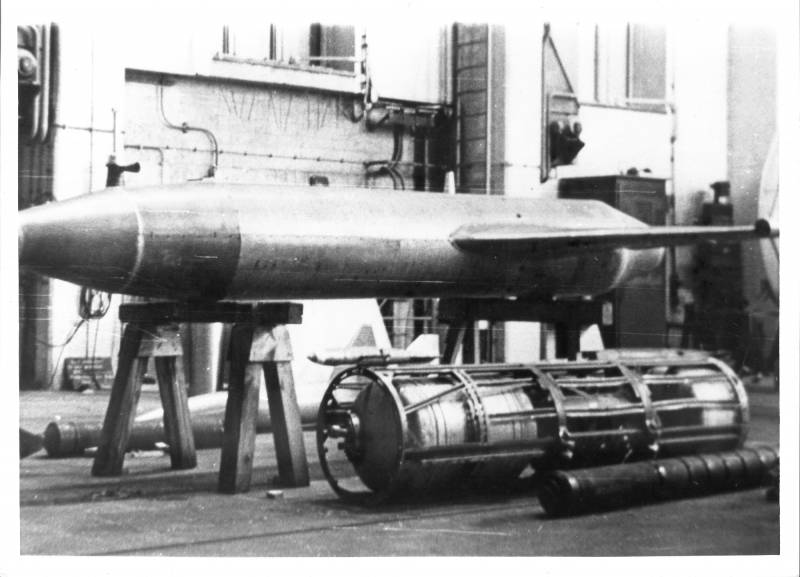
Zaur Feuerlilie F-55 in the assembly shop. Photo National Museum of Aeronautics and Astronautics / airandspace.si.edu
Shortly after the F-25 began to develop a larger and heavier rocket F-55. Due to the numerous technical and technological problems, the F-55 tests began only in the 1944 year. Several test launches showed rocket imperfections. Attempts were made to improve it, but at the end of January 1945-th project was closed in favor of other developments.
In 1941, the development of the next project began, later called Wasserfall (“Waterfall”). At the end of November, 1942 approved the final appearance of such a missile defense. It envisaged the use of a liquid-propellant rocket engine and an improved guidance system. With the help of the radar, the operator had to monitor the flight of the target and the rocket, adjusting the trajectory of the latter. The Tests of the Waterfall began in the spring of 1944, and continued until the winter of 1945. During this time, carried out several dozen test launches, but the tests were not completed, and the air defense system was not put into service.
In the 1943 year, when the Allies began to regularly and massively bomb objects in the German rear, Henschel launched the Hz 117 Schmetterling (Butterfly) project. The concept of this project was formed in 1941 by Professor G.А. Wagner However, there is a plausible version, according to which the basis of the project Hs 117 lay Italian developments on the rocket DAAC. The proposed construction of a cruise missile with rocket engine and guidance system used in the type of Feuerlilie. In the first months of 1944, the “Butterfly” was filed for testing, and in a few months, the product was completed.
The Hs 117 Schmetterling project can be considered the most successful German development in the field of air defense missile systems. So, at the very end of 1944, an order for serial production of such missiles appeared according to the test results; their deployment was scheduled for March next year. Soon it was possible to establish a serial assembly, which in the future was to reach the pace of about 3 thousand missiles per month. A variant of the air-to-air Hs 117 rocket was also developed. However, at the very beginning of February 1945, all the work on the “Butterfly” had to be curtailed due to the presence of more pressing problems.
Since November 1942, Rheinmetall-Borsig developed the Rheintochter ("Daughters of the Rhine") at the request of the German ground forces. Created three variants of such missiles. R1 and R2 were two-stage products with solid fuel engines, and the R3 project provided for the use of starting solid propellant rocket engines and mid-range rocket engines. Management had to be carried out manually with the transmission of commands by radio. The possibility of creating aviation rocket version. Tests of the “Daughters of the Rhine” began in the summer of 1943, but missiles of versions R1 and R2 showed insufficient characteristics. Product R3 is stuck at the design stage. In February 1945, the Rheintochter project was closed along with several others.
In 1943, Messerschmitt started work on the Enzian (“Gentian”) project. The main idea of this project was to use developments on the Me-163 fighter-rocket-fighter. Thus, the Enzian rocket was supposed to be a large product with a delta wing and a liquid propellant rocket engine. The use of radio command control has been proposed; also explored the possibility of creating a thermal seeker. In the spring of 1944, the first test launches took place. Work on “Gentian” continued until January of 1945, after which they were turned down as useless.
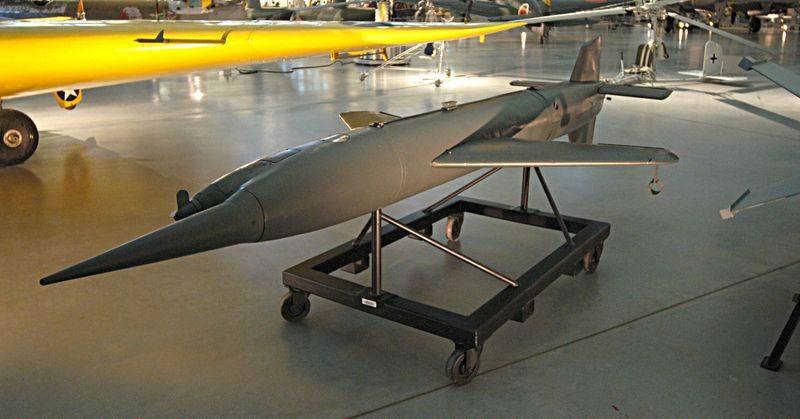
Product Hs 117 Schmetterling. Photo National Museum of Aeronautics and Astronautics / airandspace.si.edu
Thus, during the Second World War, Hitler's Germany developed eight projects of anti-aircraft guided missiles; almost all of these samples had time to go to the test, and some even coped with them and received a recommendation for arming. However, the mass production of missiles did not start and such weapons were not put on duty.
Fighting qualities
To determine the real potential of the German missiles, first of all, it is necessary to consider their tactical and technical characteristics. It should be noted that in some cases we are talking only about the calculated and "tabular" values of these parameters. All missile projects encountered some or other problems affecting their characteristics. As a result, experienced rockets of different lots could differ significantly from each other, as well as fall behind the specified parameters and not correspond to the desired level. However, for a general assessment, even tabular parameters will be sufficient.
According to known data, the Feuerlilie F-55 rocket was supposed to have a starting weight of 600 kg and carry an 100-kg high-explosive fragmentation warhead. The maximum speed, according to different sources, should have reached 1200-1500 km / h. Reach in height - 10000 m. Smaller F-25 could show more modest flight and combat performance.
The Wassserfall missile at a length of 6,13 m had a starting weight of 3,7 t, of which 235 kg was in fragmentation warhead. The rocket was supposed to reach speeds of more than 2700 km / h, which allowed it to hit targets within a radius of 25 km at altitudes up to 18 km.
420-kg rocket Hs 177 received fragmentation warhead mass 25 kg. With the help of starting solid propellant rocket engines and a sustainer LRE, it was supposed to reach speeds of up to 900-1000 km / h. The firing range reached 30-32 km, the height of the destruction of the target - no more than 9 km.
Rheintochter rockets of the R1 and R2 versions were supposed to have a starting weight of 1750 kg and carry 136-kg warheads. During the first tests, the flight speed was slightly less than 1750 km / h, as well as the altitude 6 km and the range 12 km. However, such characteristics were considered insufficient. The R3 modification was supposed to hit targets at distances up to 20-25 km and altitudes over 10 km. This version of the missile defense system was developed, but in practice its capabilities were not tested.
The Enzian rocket weighed just over 1800 kg and was supposed to show flight performance at the level of the base Me-163 fighter. The stock of liquid fuel components in the internal tanks limited the range of 25-27 km.
Understanding the low accuracy of missile guidance and the specificity of the use of enemy long-range aviation, German engineers in almost all cases used relatively heavy combat units. A charge of 100-200 kg could cause damage to a bomber even with an explosion of several tens of meters. When firing at large aircraft connections, there appeared a significant chance in one explosion, at least to damage several targets.
Differing from each other in design, technical characteristics, principles of guidance, etc., all German SAMs belonged to the same category of weapons. They were intended, first of all, for the protection of strategically important objects within a radius of 20-30 km. In the current classification, it is a short-range object defense.
Naturally, the air defense system of the German army did not have to work alone. They were supposed to be integrated into existing air defense systems. As part of the latest missiles were to interact with existing systems of detection and control. They were supposed to be a more accurate and effective addition to anti-aircraft artillery. They would also have to share their niche with fighter aircraft. Thus, in theory, the Third Reich could get a developed echeloned air defense system of strategically important areas, built on the basis of heterogeneous means.
Disadvantages and problems
However, none of the German ZUR did not come into service, and the most successful projects had to be closed at the stage of preparation for mass production. This result was predetermined by a number of objective factors. The projects faced various difficulties, some of which were fundamentally insurmountable at that time. In addition, each new project was attended by its own difficulties and difficulties, which took a lot of time and effort.
First of all, difficulties at all stages were associated with the overall technological complexity and novelty of the tasks to be solved. German specialists had to study new directions for themselves and solve unusual design problems. Not having serious experience in most of the required areas, they were forced to spend time and resources on working out all the relevant decisions.
Such works were hampered by an extremely complex general situation. With all the importance of promising developments, the bulk of resources was used in production to fill the current needs of the front. Lower priority projects constantly suffered from a shortage of resources and personnel. In addition, the Allied airstrikes played a certain role in reducing the German defense potential. Finally, at the final stage of the war, the countries of the anti-Hitler coalition seized part of the military enterprises of the Third Reich — it was during this period that the air defense system projects were closed one by one.
You can not take a plus and attempts to simultaneously develop several projects. The military industry had to scatter efforts on several different programs, each of which had a high complexity. This led to unnecessary waste of time and resources - already not endless. Perhaps the holding of a full-fledged competition with the choice of one or two projects for further development could rectify the situation and ensure that the missiles were brought to the army. However, the choice of the best project from several under-mentioned ones could become another problem.
When creating all the designed missiles, perhaps the greatest difficulties were associated with control systems and guidance. The insufficient level of development of radio-electronic technologies forced to use the most simple solutions. So, all the developed samples used radio command guidance, and most of them required the participation of the operator. The latter was to follow the rocket and control its flight using the three-point method.
At the same time, the Wasserfall rocket received a more progressive control system. Two separate radar stations were to monitor its flight and the target. The operator was asked to monitor the marks on the screen and monitor the rocket's trajectory. Directly commands were developed and transmitted to the rocket automatically. Such a system was developed and tested in the conditions of the landfill.
An important problem was the lack of technical reliability of all major systems. Because of it, all the samples required long-term refinement, and in some cases it was not possible to complete it within a reasonable time. At any stage of the flight, any system could refuse, and this obviously reduced the real effectiveness of the application.
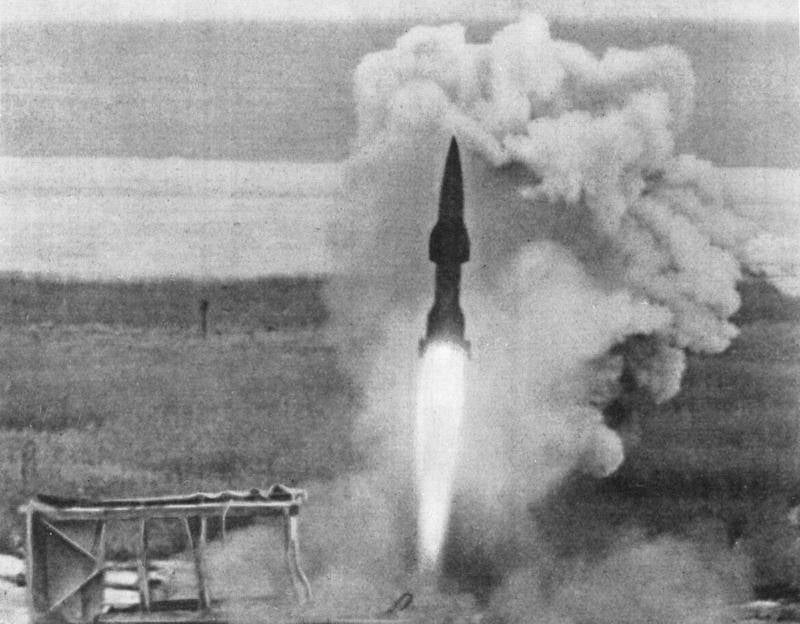
Test launch of Zour Wasserfall, September 23 1944. Photo of the Bundesarchive
A significant drawback of all air defense missile systems was the complexity of operation. They had to be deployed in prepared positions, and the process of preparing for launch took a lot of time. Long-term positions were to become a priority target for enemy bombers, which could lead to serious losses in equipment and, as a result, in air defense capabilities. Creating a full-fledged mobile air defense system at that time was an extremely difficult task or impossible at all.
In a hypothetical battle
Obviously, in the case of bringing to the series and putting on duty, the German SAM could become a serious problem for the Allied bomber aircraft. The emergence of such weapons should have led to the complication of strikes and increased losses. However, the missiles, having a lot of flaws, could hardly become a panacea and with a guarantee to protect the territory of Germany from raids.
To obtain maximum combat effectiveness, the German troops should place the air defense system in all dangerous directions and close to all objects that attract the attention of the enemy. However, they should be combined with existing air defense systems. The simultaneous use of artillery, fighters and missiles could cause serious damage to the strike force. Moreover, the most heavy missiles with one explosion could damage several bombers at once.
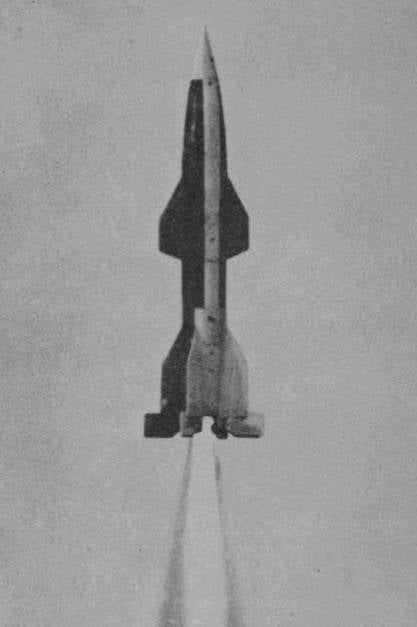
"Waterfall" on the tests by the forces of American experts, 1 April 1946. Photo by US Army
Combat use of air defense missile systems on the front line or in tactical depth was not possible. Deploying such systems on the front could be overly complex, and in addition, they risked becoming an easy target for artillery or tactical aircraft.
The real use of the majority of German missiles should have been hampered by the specifics of the controls. The use of manual control “by three points” made it possible to solve the tasks posed, but it imposed known limitations. The effectiveness of such control directly depended on the quality of the optical instruments of the operator and on the meteorological conditions. Overcast could complicate or even eliminate the use of air defense systems. The only exception was the Wasserfall rocket, for which they developed a semi-automatic radar system.
Estimated flight performance shows that German missiles, when reached, could pose a serious danger to aircraft and strike formations. High-speed missiles and the ability to maneuver reduced the likelihood of timely detection and destruction of Allied bomber by regular means of defense. The help of fighters, too, did not count.
According to its tabular characteristics, the German SAMs blocked the main working heights of Allied long-range aviation. Thus, an increase in flight altitude, which had previously reduced the negative influence of artillery, could no longer help in the new situation. It was also impossible to rely on relatively safe flights in the dark - the Vodopad SAM system, devoid of optical search tools, was not dependent on natural light.
Traditional defenses could hardly help, but the threat from missiles should be reduced with the help of new means. By that time, the Coalition already had the simplest means of electronic warfare that could interfere with the work of German radar stations and, at a minimum, make it difficult to detect and track aircraft. Accordingly, missile guidance became more complicated.
New tactical techniques, as well as advanced aviation weapons, could also be the answer to new weapons. Germany's air defense system could spur the development of Allied guided weapons - all the more so, the first samples of this kind already existed and were used.
Unrealized benefits
Thus, with mass production and competent organization, the German missiles could well influence the course of the battles and prevent the Allied raids. At the same time, the enemy could take measures and partially protect himself against such weapons. In fact, the next arms race in the field of aviation and air defense was planned.
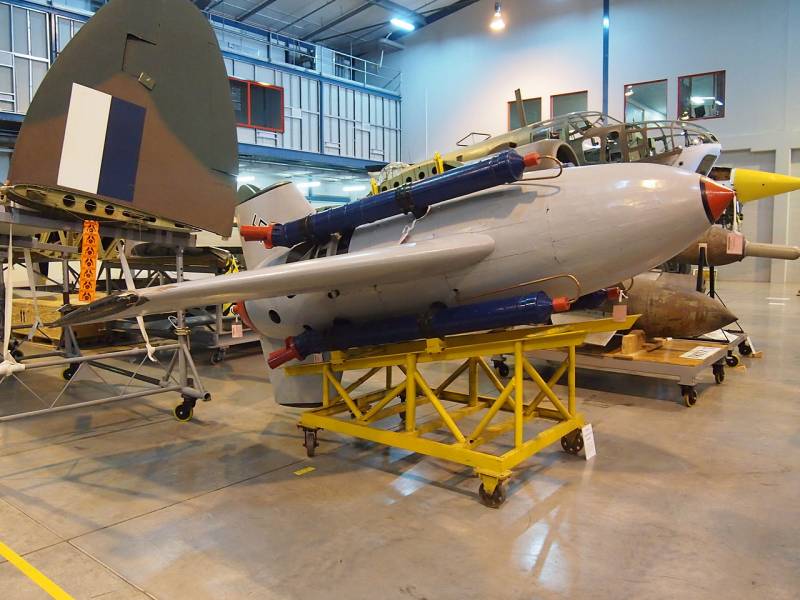
Zen Enzian in the Museum of the Australian War Memorial Treloar Technology Center. Photo of Wikimedia Commons
However, to obtain such results, the Third Reich had to bring projects to mass production and operation in the army. That he failed. For technical, technological, organizational and other reasons, not one single SAM system has gone beyond the testing grounds. Moreover, in the last months of the war, Germany had to close projects that no longer had much meaning. As a result, until the spring of 1945, the German troops had to continue to use only existing models, not counting on fundamentally new weapons. The results of this development are well known. Hitler Germany was defeated and ceased to exist.
However, the German developments have not disappeared. They went to the Allies, and in some cases were developed. On the basis of their own ideas and revised German decisions, the winning countries were able to create their own air defense system projects and successfully bring them to operation.
From the point of view of practical results, the German SAM projects, with all their positive features, proved to be useful only for the enemy. During the war, such developments led to unnecessary and, as it turned out, useless waste of time, effort and resources. These resources could be used to supply the troops, delivering additional problems to the enemy, but they were decided to be thrown into promising projects. The latter, in turn, had no effect on the course of the war. In the future, the achievements created by the Hitler regime at their own expense went to the winners. And they were able to re-use other people's wrong decisions in their favor. All this allows us to consider the German developments in the field of anti-aircraft missiles and technological breakthrough, and useless projecting at the same time.
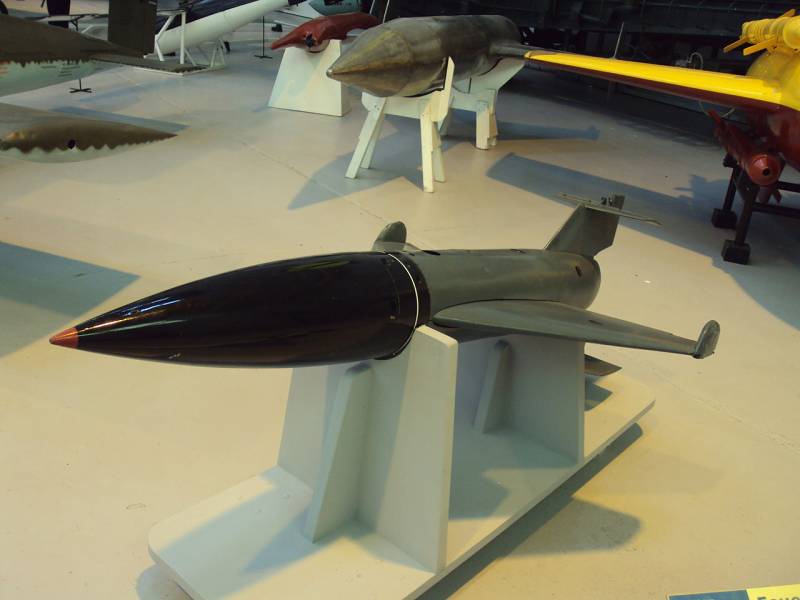
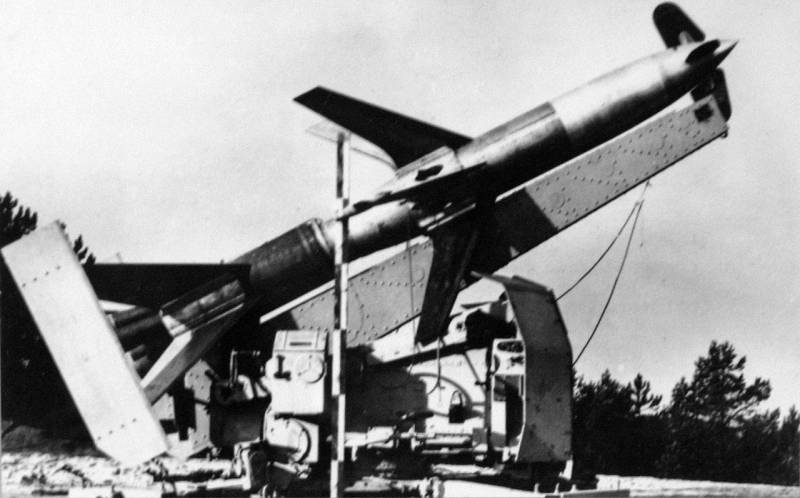
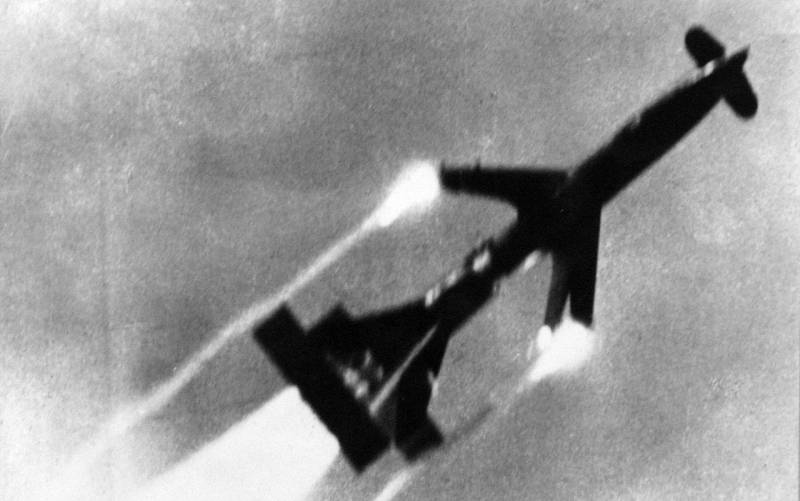
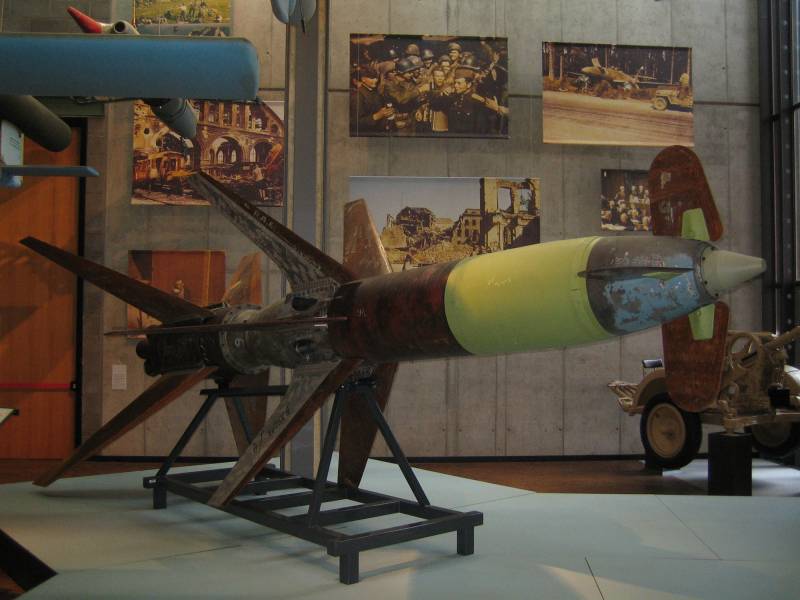
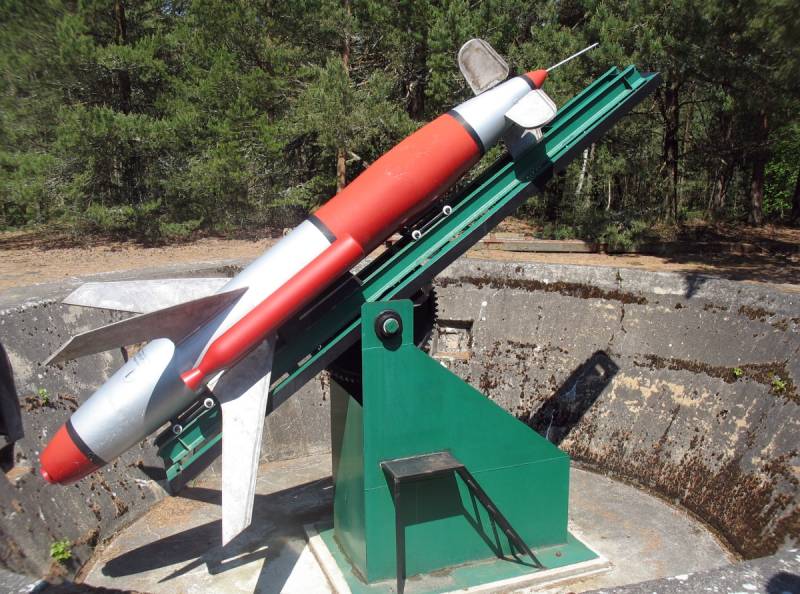
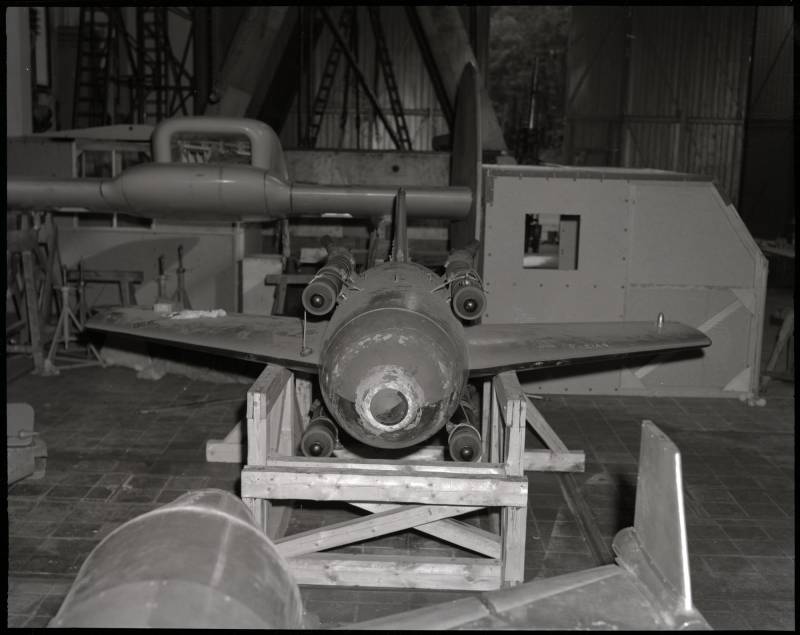
Information